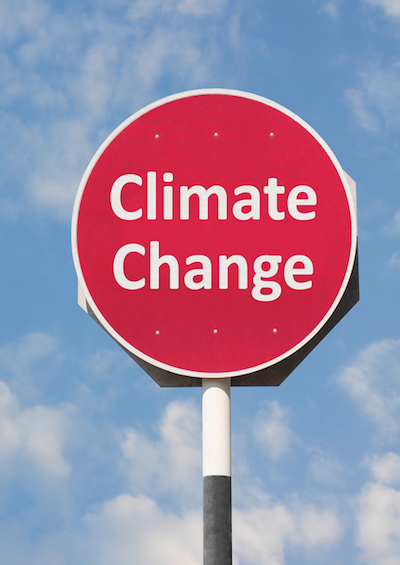Climate Refugees
Will climate change and natural disasters spur mass migration away from high-risk, high-cost regions?
September 8, 2006

Those of us who track the effects of global warming had assumed that the first large flow of climate refugees would likely be in the South Pacific with the abandonment of Tuvalu or other low-lying islands. We were wrong.
The first massive movement of climate refugees has been that of people away from the Gulf Coast of the United States.
Hurricane Katrina, which made landfall in late August 2005, forced a million people from New Orleans and the small towns on the Mississippi and Louisiana coasts to move inland either within the state or to neighboring states. Although nearly all planned to return, many have not.
Unlike previous cases, when residents typically left areas threatened by hurricanes and returned when authorities declared it safe to do so, many of these evacuees are finding new homes. In this respect, the 2005 U.S. hurricane season was different.
Record-high temperatures in the Gulf of Mexico surface waters helped make Katrina the most financially destructive hurricane ever to make landfall.
Katrina revisited
In some Mississippi Gulf Coast towns, Katrina's powerful 28-foot-high storm surge (8.5 meters) did not leave a single structure standing. There was nothing for evacuees to return to.
The destruction of housing and infrastructure in St. Bernard Parish, a low-lying 40-mile-long peninsula (64 kilometers) extending southeast from New Orleans, rendered most of it uninhabitable.
The Katrina storm surge that raised the water level in Lake Pontchartrain so high that it breached the levees and flooded New Orleans left much of the city unfit to live in.
Even today, a year later, large parts of the city are without basic infrastructure services, such as water, power, sewage disposal, garbage collection and telecommunications. Interestingly, the country to suffer the most damage from a hurricane is also primarily responsible for global warming.
Many evacuees were able to return in a matter of days, but many more were not. New Orleans' population before Katrina struck was 463,000. It shrank to 93,000 after the hurricane according to Claritas, a private demographic data-gathering and analysis firm.
Climate refugees
By January 2006, it had recovered to 174,000. By July 2006, the city still had only 214,000 residents, less than half of its pre-Katrina population.
Some evacuees are still returning, but the flow has slowed to a near trickle. We estimate that at least 250,000 of them have established homes elsewhere and will not return.
They no longer want to face the personal trauma and financial risks associated with rising seas and more destructive storms. These evacuees are now climate refugees.
While the July numbers indicate how many people have not returned home, they do not capture the personal trauma of exposure to a disaster that claimed 1,300 lives, or the sense of loss from being abruptly uprooted from home and community, and separated from schools, jobs and friends.
Assessing Katrina's effects, the American Psychological Association notes that many of the storm's victims experienced post-traumatic stress disorder. This manifestation of extreme stress is similar to that of troops returning from Iraq.
Hanging over the future of the hurricane-prone coastal regions of the southeastern United States is the difficulty in getting property insurance. In the wake of the last two hurricane seasons, including the 2004 season when four hurricanes crossed Florida, reconstruction is still ongoing, insurance costs are climbing — and private insurance companies are withdrawing from high-risk coastal areas.
The movement of insurers out of high-risk regions started after Hurricane Andrew hit Florida in 1992, destroying 60,000 homes and bankrupting some 11 local insurance companies.
In response, governments in hurricane-prone states — including Florida, Mississippi and Louisiana — each created a state-supported insurance company for homeowners unable to get private insurance.
Florida's state insurer, Citizens Property Insurance Corporation, ran a deficit of $516 million in 2004. An analysis of risks and costs in late 2005 showed that premiums charged to property owners must be raised 80% to ensure the insurer’s future viability.
These deficits were repeated in Louisiana and at the national level with the National Flood Insurance Program, which ran a $23 billion deficit in 2005.
Multiplying risk
The bottom line is that rates must rise as the risk rises. This applies not only to property insurance, but also for firms seeking to insure against business interruption losses.
As storm risks multiply and insurance rates rise, real estate prices start to decline. How much is a building lot worth in now largely abandoned St. Bernard Parish or in the low-lying parts of New Orleans?
Some of the businesses in these hard-hit areas that are not tied directly to local customers — such as consulting firms, software companies or publishing houses — have moved to more secure locations.
New Orleans entrepreneur Ken Murray, who founded Parker, Murray and Associates, a sales and marketing company, is among those who have moved their firms to Dallas.
Katrina took a heavy toll in the Louisiana and Mississippi coastal regions, but there are 35 million people living along the hurricane-prone coast that stretches from North Carolina to Texas. Half of these live in Florida with 10 million on the Atlantic coast and seven million on the Gulf coast.
A bleak future
As rising seas and more powerful hurricanes translate into higher insurance costs in these coastal communities, people are retreating inland. And just as companies migrate to regions with lower wages, they also migrate to regions with lower insurance costs.
The experience with more destructive storms in recent years is only the beginning. Since 1970, the Earth's average temperature has risen by one degree Fahrenheit, but by 2100 it could rise by up to 10 degrees Fahrenheit (6 degrees Celsius).
More destructive storms are an early manifestation of global warming. The long-term risk is that rising temperatures will melt glaciers and polar ice caps, raising sea level and displacing coastal residents worldwide.
The flow of climate refugees to date numbers in the thousands, but if we do not quickly reduce CO2 emissions, it could one day number in the millions.
Read previous
The Global Famine of 1877 and 1899
September 6, 2006
